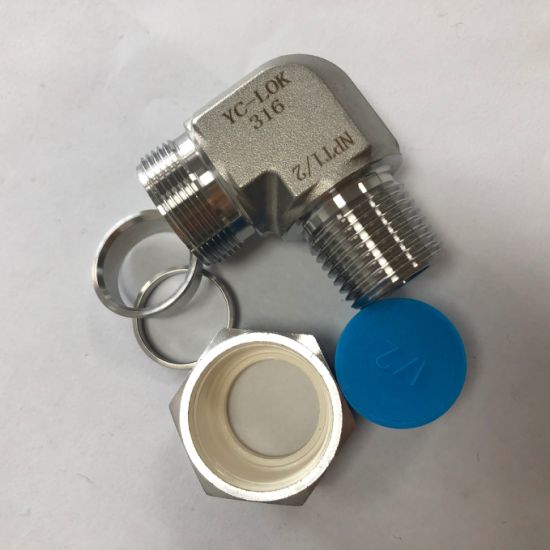
The design of JIC fittings relies on metal-to-metal contact. The nose of a fitting needs to touch the inside diameter of the flared tubing. The manufacturing process at SSP is done with great care. The flared nose of a JIC fitting has a very smooth surface that minimizes irregularities that could cause leakage. As a result, JIC fittings are considered sanitary.
JIC fittings are generally characterized by a 37-degree flare seating surface. They are used in fuel delivery and fluid power applications. They offer high-quality leak protection. The male JIC fitting features a straight thread with an O-ring in the face, while the female JIC fitting features a machined flat face. When a JIC fitting is installed, it seals with the male flare, and the sealing process is similar to that of a split-flange connection.
In terms of sanitary design, JIC fittings meet the requirements of the Joint Industry Council. Their diameters are specified to fit the outer diameter of the tubing, and are characterized by the fact that they can be used in a variety of applications. They are often referred to as SAE J514 Flare fittings. In addition to their sanitary properties, the JIC fittings are available in various tube sizes and can be adapted to other types of fittings, including SAE-J514 hose assemblies.
The installation process of JIC fittings is straightforward and involves four simple steps: checking for contamination, cutting the tube, and applying lubricant. Next, attach the male flare to the female cone seat and tighten the flare nut. After that, turn the flare nut until it contacts the sealing surface. Lastly, check that the connection is tightened properly. After all, the JIC fittings are sanitary.
The JIC fittings are made according to the ISO 8434-2 and SAE J514 specifications. A sleeve, a nut, and a body are the components of a JIC fitting. The body is flared at 37 degrees, and the nut is flared at a 37-degree angle. The flared fit is the most common type of JIC fittings.
JIC fittings are manufactured to different standards than SAE couplings. AN fittings are made of carbon steel, stainless steel, or aluminum, while SAE J514 fittings are made of brass and aluminum. The SAE 37deg standard has the same dimensions and is generally used in commercial aircraft and agricultural equipment. So, both types of couplings are sanitary. A well-built JIC fitting will last for a long time.
SAE JIC fittings are the most common sanitary in the market. The ANSI standard specifies which fittings can be used for various applications. The ANSI standard is the basis for JIC hydraulics. It is defined by the SAE J514 specification. The SAE 37deg and ANSI are both similar in size. When compared, both are sanitary.

